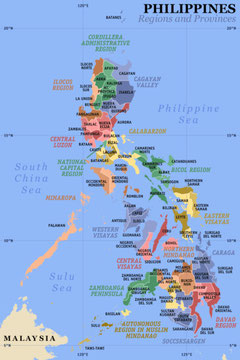|
|
The visitor to Metro Manila commonly sees the Philippines as the The Philippines is an archipelago of 7,107 islands. It |
|
They transferred the seat of government to Manila in 1571 and proceeded to colonize the country. The Filipinos resisted and waged Asia's first nationalistrevolution in 1896. On June 12, 1898, Emilio Aguinaldo declared the Philippines independent from Spain and proclaimed himself president. After ruling for 333 years, the Spaniards finally left in 1898 and were replaced by the Americans who stayed for 48 years. On July 4, 1946, the Americans recognized Philippine independence. |
|
The Philippines is the fifth largest English-speaking country in the world. The country is divided into three geographical areas: Luzon, Visayas, and Mindanao. It has 17 regions, 80 provinces, 138 cities, 1,496 municipalities, and 42,025 barangays (note: the barangay is the smallest political unit into which cities and municipalities in the Philippines are divided. It is the basic unit of the Philippine political system. It consists of less than 1,000 inhabitants residing within the territorial limit of a city or municipality and administered by a set of elective officials, headed by a barangay chairman or punong barangay). |

